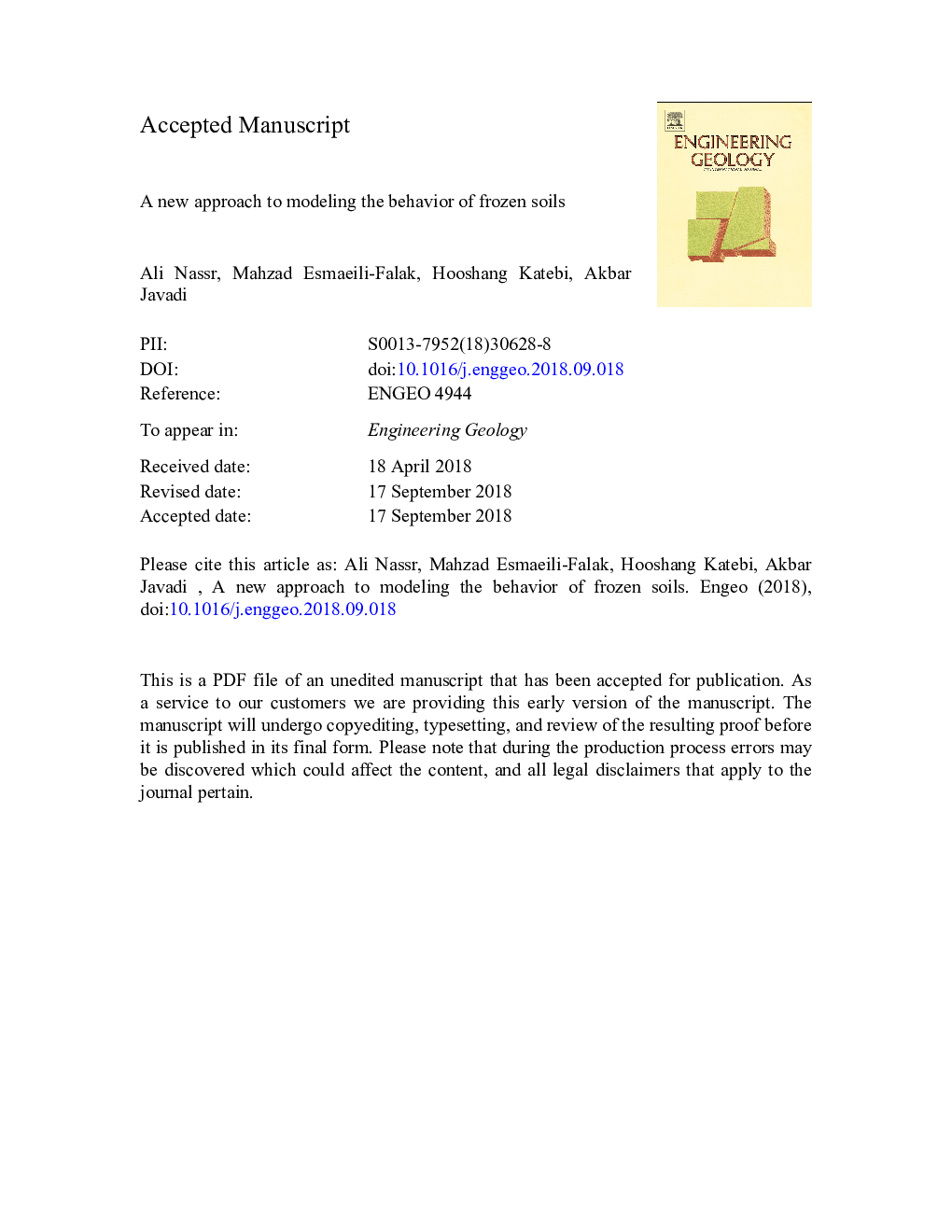| Article ID | Journal | Published Year | Pages | File Type |
|---|---|---|---|---|
| 11017655 | Engineering Geology | 2018 | 32 Pages |
Abstract
A comprehensive set of triaxial tests were carried out on samples of a frozen soil and the data were used for training and verification of the EPR model. The developed EPR model was also used to simulate the entire stress-strain curve of triaxial tests, the data for which were not used during the training of the EPR model. The results of the EPR model predictions were compared with the actual data and it was shown that the proposed methodology can extract and reproduce the behavior of the frozen soil with a very high accuracy. It was also shown that the EPR model is able to accurately generalize the predictions to unseen cases. A sensitivity analysis revealed that the model developed from raw experimental data is able to extract and effectively represent the underlying mechanics of the behavior of frozen soils. The proposed methodology presents a unified approach to modeling of materials that can also help the user gain a deeper insight into the behavior of the materials. The main advantages of the proposed technique in modeling the complex behavior of frozen soil have been highlighted.
Related Topics
Physical Sciences and Engineering
Earth and Planetary Sciences
Geotechnical Engineering and Engineering Geology
Authors
Ali Nassr, Mahzad Esmaeili-Falak, Hooshang Katebi, Akbar Javadi,
